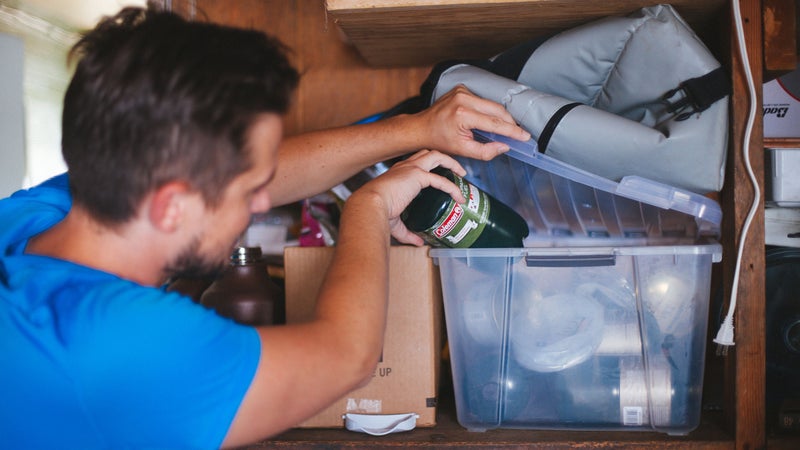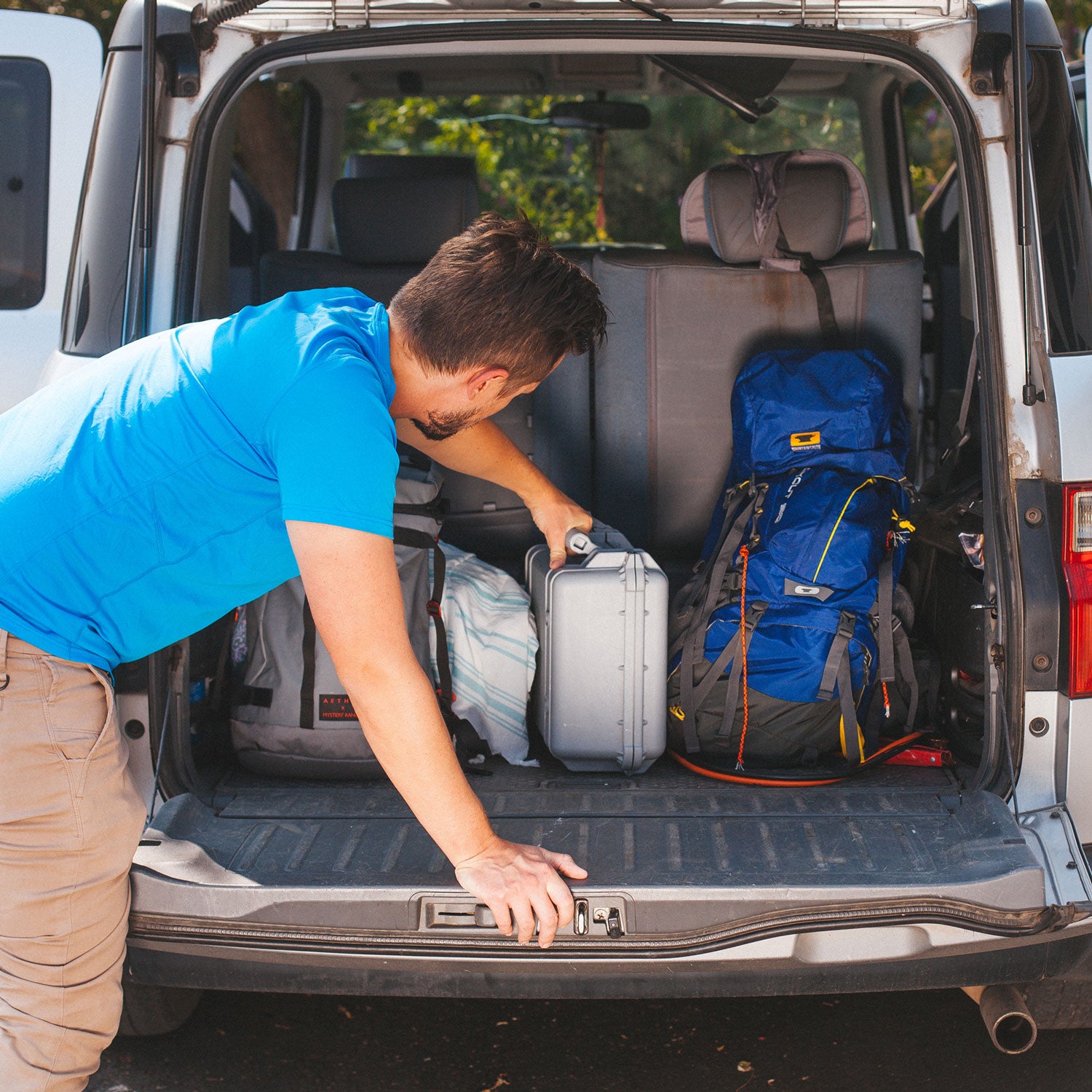“The time to prepare for your next adventure is immediately after you finish the current one,” the saying goes. I’ve had people tell me that so many times now that I roll my eyes whenever I hear it. But it’s so true. When we get home from a big trip, all we want to do is plop down on the couch with beer and pizza, then sleep for ten hours. Putting in the effort to unpack properly, however, makes getting out the door next time so much easier.
Here are some best unpacking practices I’ve developed after my own jaunts and gleaned from other compulsive organizers.
#1. Start Right Away
Immediately after shifting the car into park, begin unloading and putting gear away. “I’ll do it later” will inevitably turn into endless procrastination and before you know it, your gear ends up rotting in your truck or a rooftop box for months.
#2. Embrace Bleach
For the most part, I use gentle natural cleaners on my gear. But when it comes to things like water bottles, bladders, or anything I use to eat, I obliterate bugs with bleach, mixing one tablespoon of Clorox with one gallon of water in the sink or a plastic bin and then soaking everything for two minutes. Even the smallest amount of bacteria can ruin a piece of gear or make you sick. Taking the time to sterilize everything before packing it away will ensure the cooties don’t get enough of a foothold to stick around.
#3. Double Dry
You can get away with throwing on a slightly damp shirt before heading out for a run; you cannot get away with throwing a damp piece of apparel or gear into a pack or bin until you need it next month or next year. Any amount of moisture can grow into mold when left alone in a dark hiding place, so when in doubt, leave something to hang dry for an extra hour, or throw those ski socks back into the dryer for another round.
#4. Troubleshoot
If a piece of gear didn’t perform to your standards—crampons felt dull, water filter was sluggish, tent started to leak—now is the time to take note of it and make plans to fix or repair it. This is also the moment to check in on the expiration dates of items in your first-aid kit. I suggest making a list of any gear issues that arise and setting a schedule to address them if you can’t take care of them right at the end of a trip.
#5. Restock

If you used anything from your first-aid or repair kits, replace those supplies as soon as possible. You will likely be able to refill simple things like ibuprofen, Band-Aids, and duct tape before you go to bed for the night. For things you might not have lying around, like stove fuel canisters, a list helps here too, so you know to make a run to your local gear shop.
#6. Keep It Together
While you shouldn’t store your sleeping bag in a tight stuffsack after an adventure—the longer it’s compressed, the more loft it could lose—you should store the bag and sack in the same spot. The same goes for tent stakes (after you scrub off the mud) and your tent, plus all the (well-cleaned!) items in your camp kitchen kit. In short, things that work in tandem belong together.
#7. Put It Back Where You Found It
Having a system and sticking to it makes the process of putting everything away (and finding it later) really easy. Organizing gear into labeled bins works great—but only if you put equipment back in the proper bins. Don’t get lazy!


